美国历史文化概况(英文版)UNIT 4 Civil War and Abraham Lincoln
- 格式:ppt
- 大小:855.00 KB
- 文档页数:38
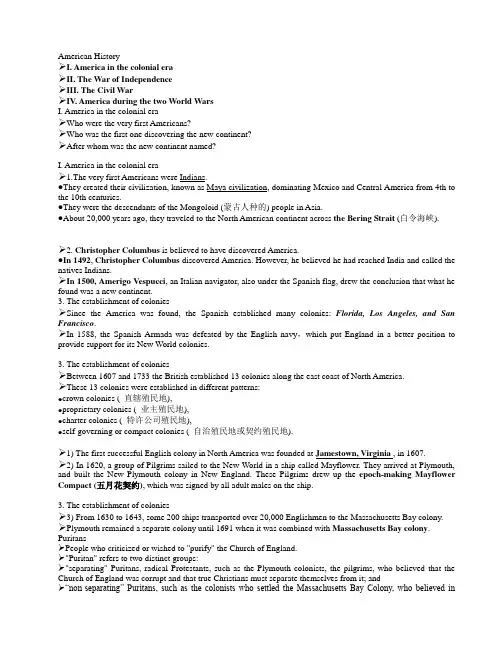
American History➢I. America in the colonial era➢II. The War of Independence➢III. The Civil War➢IV. America during the two World WarsI. America in the colonial era➢Who were the very first Americans?➢Who was the first one discovering the new continent?➢After whom was the new continent named?I. America in the colonial era➢1.The very first Americans were Indians.●They created their civilization, known as Maya civilization, dominating Mexico and Central America from 4th to the 10th centuries.●They were the descendants of the Mongoloid (蒙古人种的) people in Asia.●About 20,000 years ago, they traveled to the North American continent across the Bering Strait (白令海峡).➢2. Christopher Columbus is believed to have discovered America.●In 1492, Christopher Columbus discovered America. However, he believed he had reached India and called the natives Indians.➢In 1500, Amerigo Vespucci, an Italian navigator, also under the Spanish flag, drew the conclusion that what he found was a new continent.3. The establishment of colonies➢Since the America was found, the Spanish established many colonies: Florida, Los Angeles, and San Francisco.➢In 1588, the Spanish Armada was defeated by the English navy,which put England in a better position to provide support for its New World colonies.3. The establishment of colonies➢Between 1607 and 1733 the British established 13 colonies along the east coast of North America.➢These 13 colonies were established in different patterns:●crown colonies ( 直辖殖民地),●proprietary colonies ( 业主殖民地),●charter colonies ( 特许公司殖民地),●self-governing or compact colonies ( 自治殖民地或契约殖民地).➢1) The first successful English colony in North America was founded at Jamestown, Virginia , in 1607.➢2) In 1620, a group of Pilgrims sailed to the New World in a ship called Mayflower. They arrived at Plymouth, and built the New Plymouth colony in New England. These Pilgrims drew up the epoch-making Mayflower Compact (五月花契约), which was signed by all adult males on the ship.3. The establishment of colonies➢3) From 1630 to 1643, some 200 ships transported over 20,000 Englishmen to the Massachusetts Bay colony. ➢Plymouth remained a separate colony until 1691 when it was combined with Massachusetts Bay colony. Puritans➢People who criticized or wished to "purify" the Church of England.➢"Puritan" refers to two distinct groups:➢"separating" Puritans, radical Protestants, such as the Plymouth colonists, the pilgrims, who believed that the Church of England was corrupt and that true Christians must separate themselves from it; and➢“non-separating” Puritans, such as the colonists who settled the Massachusetts Bay Colony, who believed inreform but not separation.Puritans➢(1) Puritans believed that God had set special duties for everyone to carry out.➢(2) These puritans were well known for their spirit of enterprise and high standard of morality.➢(3) Puritans advocated thriftiness in doing things and rejected all church rituals. They demanded equality and opposed all priestly hierarchy.Puritans➢(4) They believed it was noble to protect human rights in their pursuit of wealth.➢(5) Puritans placed great importance on education and founded Harvard College in 1636. Most of the Puritans were well-educated and wealthy.Puritans3. The establishment of colonies➢4) The Rhode Island Colony was founded by dissenters pushed out of Massachusetts.➢5) The other four colonies: the Connecticut Colony, the New Hampshire colony, Maine, Vermont comprises the region, known as New England.3. The establishment of colonies➢The New Englanders, despite their differences, mostly belong to the Puritan group in religion. Their values include the belief in hard work, thriftiness, accumulation of wealth, self-government, acquisitiveness, and Puritanic morality. Their culture laid the foundation of American values and became the American mainstream culture. And New England has been regarded as the cradle of American democracy.3. The establishment of colonies➢6) New York and New Jersey were first colonized by the Dutch while Delaware was founded by the Swedish. These three colonies were later taken over by the English Crown as crown colonies.3. The establishment of colonies➢7) Pennsylvania was founded by William Penn. Pen n set up a colony, Pennsylvania, meaning “Penn’s wood”. He adopted a tolerant policy which welcomed any settlers who read the Bible and believed in God. Pennsylvania later played an active role in fighting for America’s independence and against the slave s ystem in the South.3. The establishment of colonies➢8) The other colonies were Maryland, South and North Carolinas, and Georgia.➢So, by 1773, English settlers had occupied 13 colonies along the Atlantic coast.4. Features of American culture:➢1) a blending of European cultures under new circumstances in the New World➢2) less formal but more pragmatic, less conservative and more outspoken;➢3) hard-work, diligence, religious tolerance, respect of individual rights●(people of different national origi ns required social life to show toleration; not interfering in others’ privacy; problems concerning belief became a private affair)➢4) attaching great importance to education●founding Harvard College in Massachusetts 1636 by the Puritans with the original idea of enabling people to read Bible and communicate with God.➢Who were the very first Americans?➢Who is believed to have discovered America?➢After whom America was named?➢Which was the first successful English colony in North America?➢Which was New England comprised of?➢Which were the first 13 colonies along the Atlantic coast?II. The War of Independence➢1. Background➢1) The French and Indian War (The Seven Years’ War, 1756-1763)●The war first broke out in America between French and England, both of which claimed the Ohio River valley.●In 1754, the English colonists started to attack the French troops in this region and this touched off the French and Indian War.●The War, officially declared in Europe in 1756, was also known in Europe as the Seven Years’ War. Many countries in Europe were involved in the war.●Finally, France failed. The French had to sign the 1763 Treaty of Paris and ceded Canada to Britain.➢2) Conflict between England and its colonies:●England imposed new taxes partly in order to defray the cost of fighting the Seven Years’ War, and expected Americans to lodge British soldiers in their homes. The colonists resented the taxes and resisted the quartering of soldiers.●In 1765, the Stamp Act was passed by the English Parliament.●The Act was aiming to collect more taxes from the colonists, which made many colonists unhappy because they were not given a single seat to voice their feelings in the English Parliament at that time, so they raised the slogan of “no taxation without representation”.➢The direct cause: The Boston Tea Party●Because of import duties on tea, many merchants smuggled tea from Holland, instead of importing from England.●In order to deal with the rotting tea in the London warehouses and make more profits, the East India Company,a vital source of British wealth, was allowed by the British Government to sell its tea to the colonies free of import duty.●Colonial merchants were enraged and protested against the unequal treatment. On December 16, 1773, a band of50 men disguised as Indians and led by Samuel Adams dumped 90,000 pounds tea of three British tea-bearing ships lying at anchor in Boston Harbor, worth 90,000 pounds.➢3) the First Continental Congress●In September 1774●held in Philadelphia which encouraged Americans to refuse to buy British goods➢2. process➢1) the first shots●On April 19, 1775, 700 British soldiers were sent to Concord to search for weapons and “rebellious” colonists. When the troops reached Lexington at dawn, they encountered militiamen.●Fighting broke out and the first shots in the American War of Independence were fired.➢2) the Second Continental Congress➢In May, 1775➢held in Philadelphia and began to assume the functions of a national government.➢It founded the Continental Army and Navy under the command of George Washington.➢Thomas Jefferson drafted the Declaration of Independence, which the Congress adopted on July 4, 1776.➢The Declaration of Independence➢presenting a public defense of the American War of Independence➢a clear explanation of the political theory behind the revolution and this theory came from the British philosopher John Locke:●men have a natural right to “life, liberty and the pursuit of Happiness”; government can rule only with “theconsent of the governed”; any government may be dissolved when it fails to protect the rights of the people.●This theory is central to the western political tradition.➢3. Results●At first, the war went badly for the Americans.●After endless hard fighting, in October 1777, the Americans defeated the British troops at Saratoga 萨拉托加in Northern New York.●This was the turning point of the War, leading directly to an alliance between the U.S and France. (statue of liberty, 1886)●Finally, in 1783, the Treaty of Paris was signed, with which, the America won its independence.➢4. After the War of Independence➢1) problem➢How to convert the Confederation into Federation became a big problem for Americans.➢Because of different backgrounds and economic conditions, the 13 states were not closely united.●There were conflicts between radicals and moderates.●Moderates advocated a political economy based on a strong national government that would actively advance commerce and protect private property.●Radicals favoured a different political economy, based on a weaker central government, a more localized democracy, and a hand-off economic policy.➢2) the Constitutional Convention●On May 25, 1787●held in Philadelphia●Fifty-five delegates from all the states except Rhode Island attended the Convention.●These delegates were advocates of a united nation and had been active in the Revolution.●George Washington was elected chairman of the Convention.●James Madison from Virginia took the lead in the work to write a new constitution and he became known as “Father of the U. S. Constitution.”➢3) Federalist Papers 联邦文集●Prominent Federalists such as Alexander Hamilton, James Madison, and John Jay wrote 85 letters to the newspapers of New York, which were known as the Federalist Papers.●the best explanation of the constitution as well as one of the most important works on political theory➢4) the Bill of Rights人权法案➢The first ten amendments to the U.S Constitution, which was called the Bill of Rights, adopted in 1791 which promise to protect individuals' rights.●Freedom of religion, speech and the press;●The right to keep and bear arms;●The right against unreasonable searches and seizures;●The right against self-incrimination ( 自证其罪).。
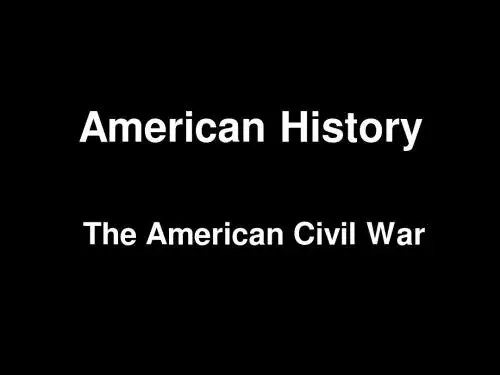
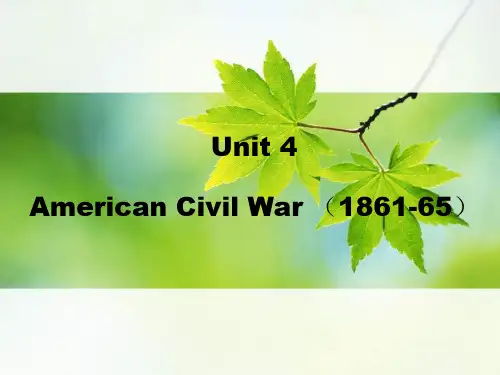
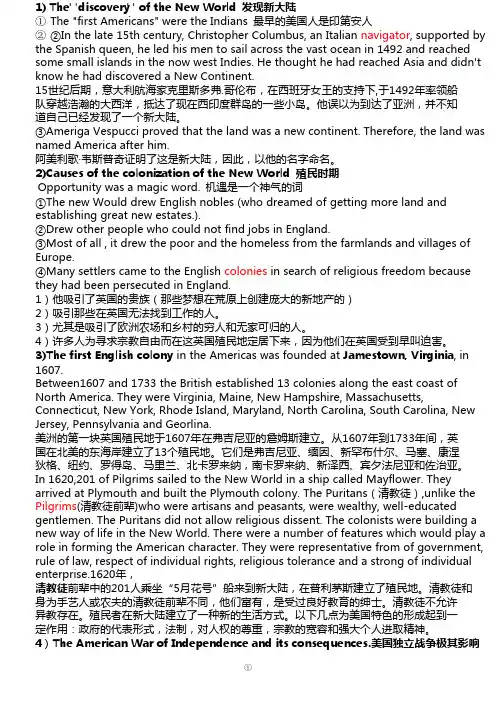
1) The "discovery" of the New World 发现新大陆①The "first Americans" were the Indians 最早的美国人是印第安人②②In the late 15th century, Christopher Columbus, an Italian navigator, supported by the Spanish queen, he led his men to sail across the vast ocean in 1492 and reached some small islands in the now west Indies. He thought he had reached Asia and didn't know he had discovered a New Continent.15世纪后期,意大利航海家克里斯多弗.哥伦布,在西班牙女王的支持下,于1492年率领船队穿越浩瀚的大西洋,抵达了现在西印度群岛的一些小岛。
他误以为到达了亚洲,并不知道自己已经发现了一个新大陆。
③Ameriga Vespucci proved that the land was a new continent. Therefore, the land was named America after him.阿美利歌·韦斯普奇证明了这是新大陆,因此,以他的名字命名。
2)Causes of the colonization of the New World 殖民时期Opportunity was a magic word.机遇是一个神气的词①The new Would drew English nobles (who dreamed of getting more land and establishing great new estates.).②Drew other people who could not find jobs in England.③Most of all , it drew the poor and the homeless from the farmlands and villages of Europe.④Many settlers came to the English colonies in search of religious freedom because they had been persecuted in England.1)他吸引了英国的贵族(那些梦想在荒原上创建庞大的新地产的)2)吸引那些在英国无法找到工作的人。
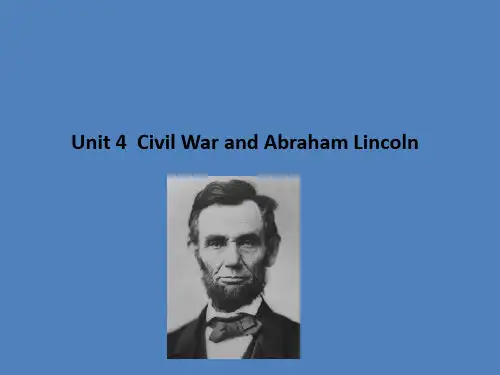
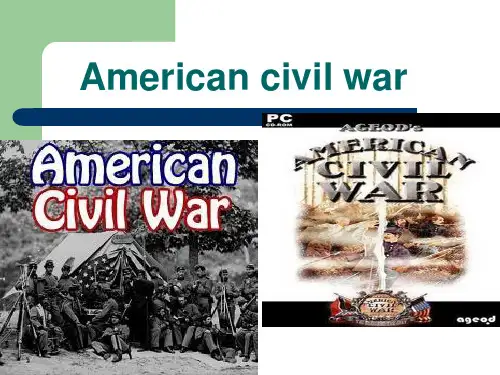
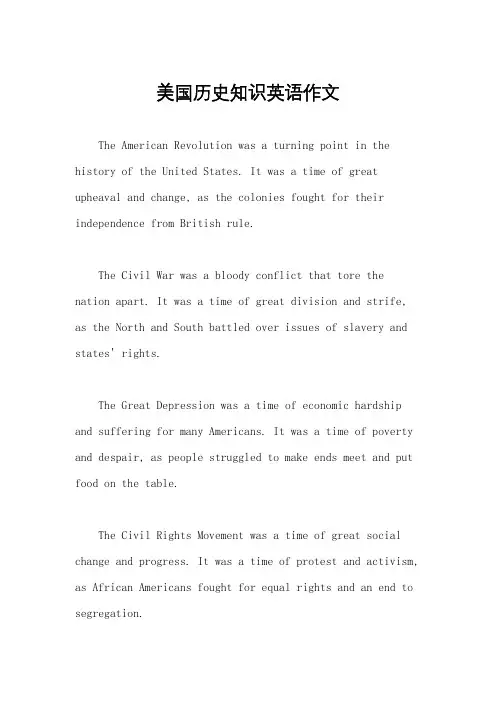
美国历史知识英语作文The American Revolution was a turning point in the history of the United States. It was a time of great upheaval and change, as the colonies fought for their independence from British rule.The Civil War was a bloody conflict that tore the nation apart. It was a time of great division and strife, as the North and South battled over issues of slavery and states' rights.The Great Depression was a time of economic hardship and suffering for many Americans. It was a time of poverty and despair, as people struggled to make ends meet and put food on the table.The Civil Rights Movement was a time of great social change and progress. It was a time of protest and activism, as African Americans fought for equal rights and an end to segregation.The Vietnam War was a controversial conflict that divided the nation. It was a time of protest and dissent, as many Americans opposed the war and called for an end to US involvement.The 9/11 terrorist attacks were a tragic event that shook the nation to its core. It was a time of fear and uncertainty, as people grappled with the reality of terrorism on American soil.The election of Barack Obama as the first African American president was a historic moment for the country. It was a time of hope and change, as people looked to the future with optimism and a sense of possibility.。
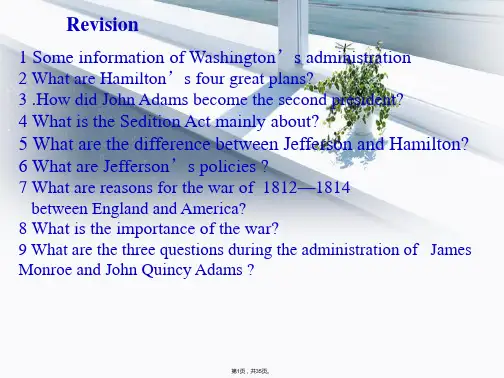
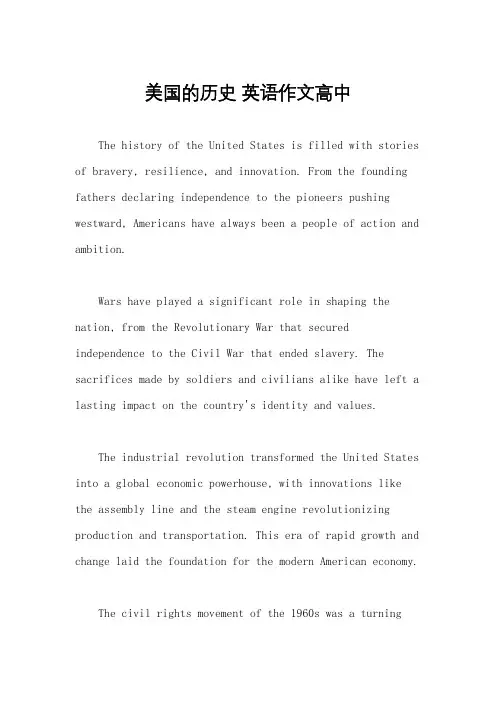
美国的历史英语作文高中The history of the United States is filled with stories of bravery, resilience, and innovation. From the founding fathers declaring independence to the pioneers pushing westward, Americans have always been a people of action and ambition.Wars have played a significant role in shaping the nation, from the Revolutionary War that secured independence to the Civil War that ended slavery. The sacrifices made by soldiers and civilians alike have left a lasting impact on the country's identity and values.The industrial revolution transformed the United States into a global economic powerhouse, with innovations like the assembly line and the steam engine revolutionizing production and transportation. This era of rapid growth and change laid the foundation for the modern American economy.The civil rights movement of the 1960s was a turningpoint in American history, as activists fought for equality and justice for all. The struggles and triumphs of figures like Martin Luther King Jr. and Rosa Parks continue to inspire generations to stand up for what is right.Today, the United States faces new challenges and opportunities as it navigates a rapidly changing world. From technological advancements to environmental concerns, the country must continue to adapt and evolve in order to remain a beacon of freedom and democracy for future generations.。

![美国历史文化概况(英文版)UNIT 1 Colonization and Independence[精]](https://uimg.taocdn.com/44c696017e21af45b307a8ee.webp)